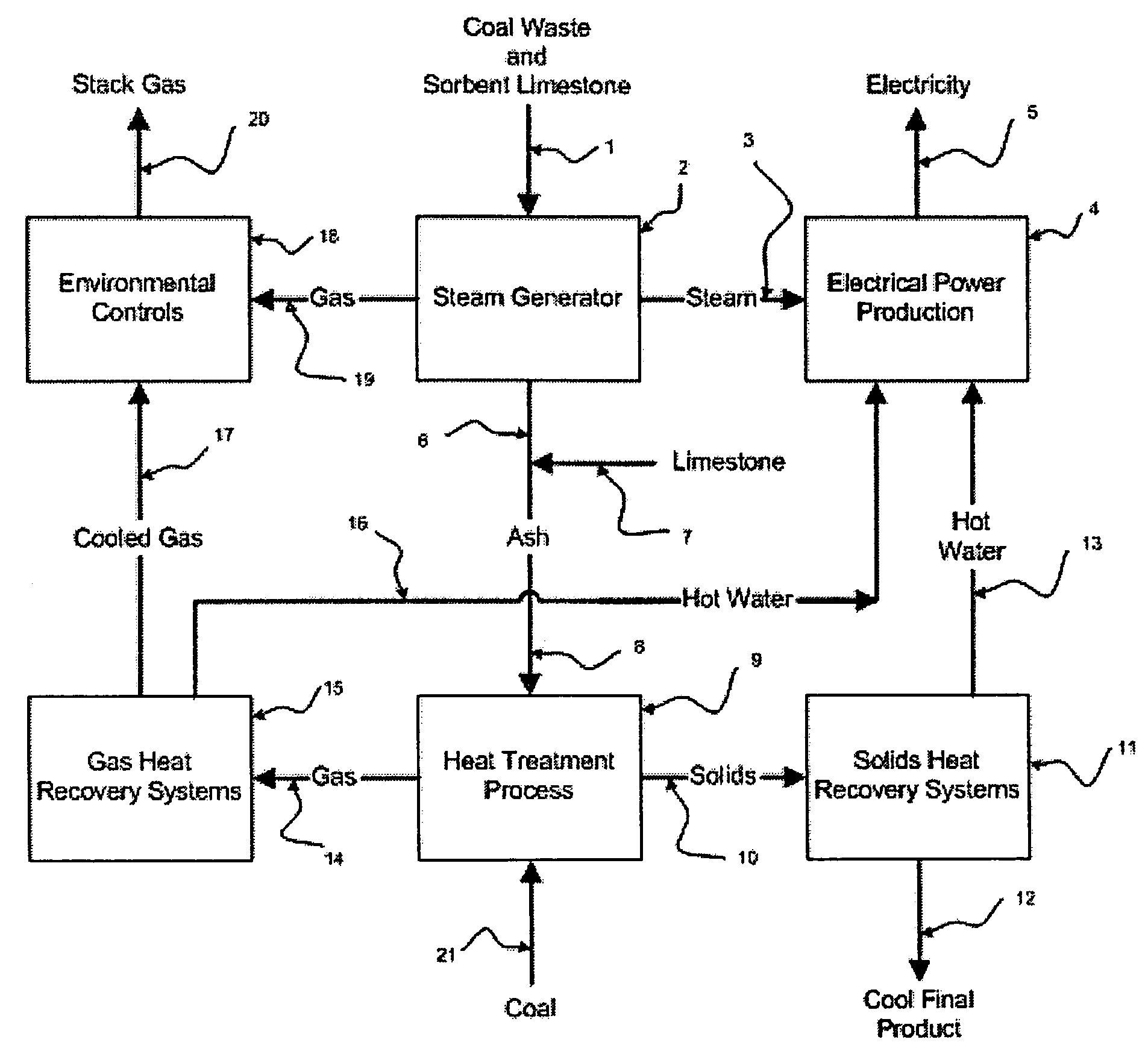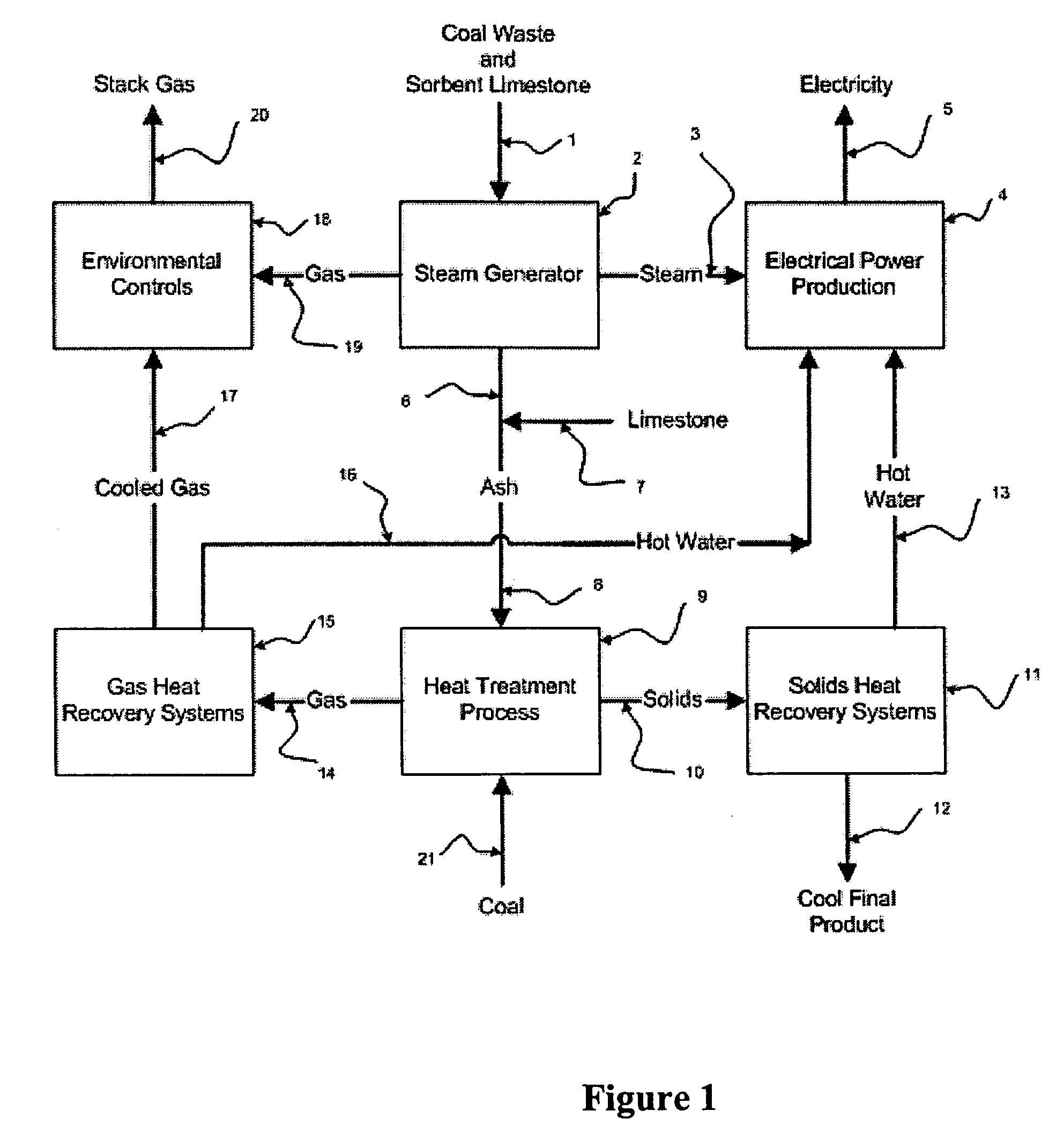Method of making pozzolands and cementitious materials from coal combustion by-products
a technology of cementitious materials and pozzolands, which is applied in the direction of climate sustainability, solid waste management, sustainable waste treatment, etc., can solve the problems of unsuitable fbc and cfbc boiler operating conditions for producing pozzolanic ashes, and the disposal of pozzolanic ashes in landfills at great cost, so as to reduce the space required for disposal and eliminate permanent damage to the environment
- Summary
- Abstract
- Description
- Claims
- Application Information
AI Technical Summary
Benefits of technology
Problems solved by technology
Method used
Image
Examples
Embodiment Construction
[0019] The preferred embodiment of the invention is shown in FIG. 1. Coal waste and sorbent limestone used to control sulfur dioxide emissions (1) is feed to a steam generator (2) and combusted to make steam (3). Useful energy contained in the steam is extracted by turbines and generators contained in the electrical power production section (4) to produce electricity (5).
[0020] Ash (6) produced by combusting coal in the steam generator is mixed in a specified proportion with limestone (7) to serve as a feed stock (8) for an elevated-temperature treatment process kiln (9). The kiln produces hot solids (10) having the desired physical and chemical properties. Thermal energy required for treatment is supplied by combusting coal (21).
[0021] The solids are cooled in a solids heat recovery system (11) to produce cooled material (12). Boiler feed water, used in electrical power production, is heated in the heat exchanger and returned as hot boiler feed water (13) to the electrical power ...
PUM
| Property | Measurement | Unit |
|---|---|---|
| Temperature | aaaaa | aaaaa |
| Temperature | aaaaa | aaaaa |
| Fraction | aaaaa | aaaaa |
Abstract
Description
Claims
Application Information
 Login to View More
Login to View More - R&D
- Intellectual Property
- Life Sciences
- Materials
- Tech Scout
- Unparalleled Data Quality
- Higher Quality Content
- 60% Fewer Hallucinations
Browse by: Latest US Patents, China's latest patents, Technical Efficacy Thesaurus, Application Domain, Technology Topic, Popular Technical Reports.
© 2025 PatSnap. All rights reserved.Legal|Privacy policy|Modern Slavery Act Transparency Statement|Sitemap|About US| Contact US: help@patsnap.com


